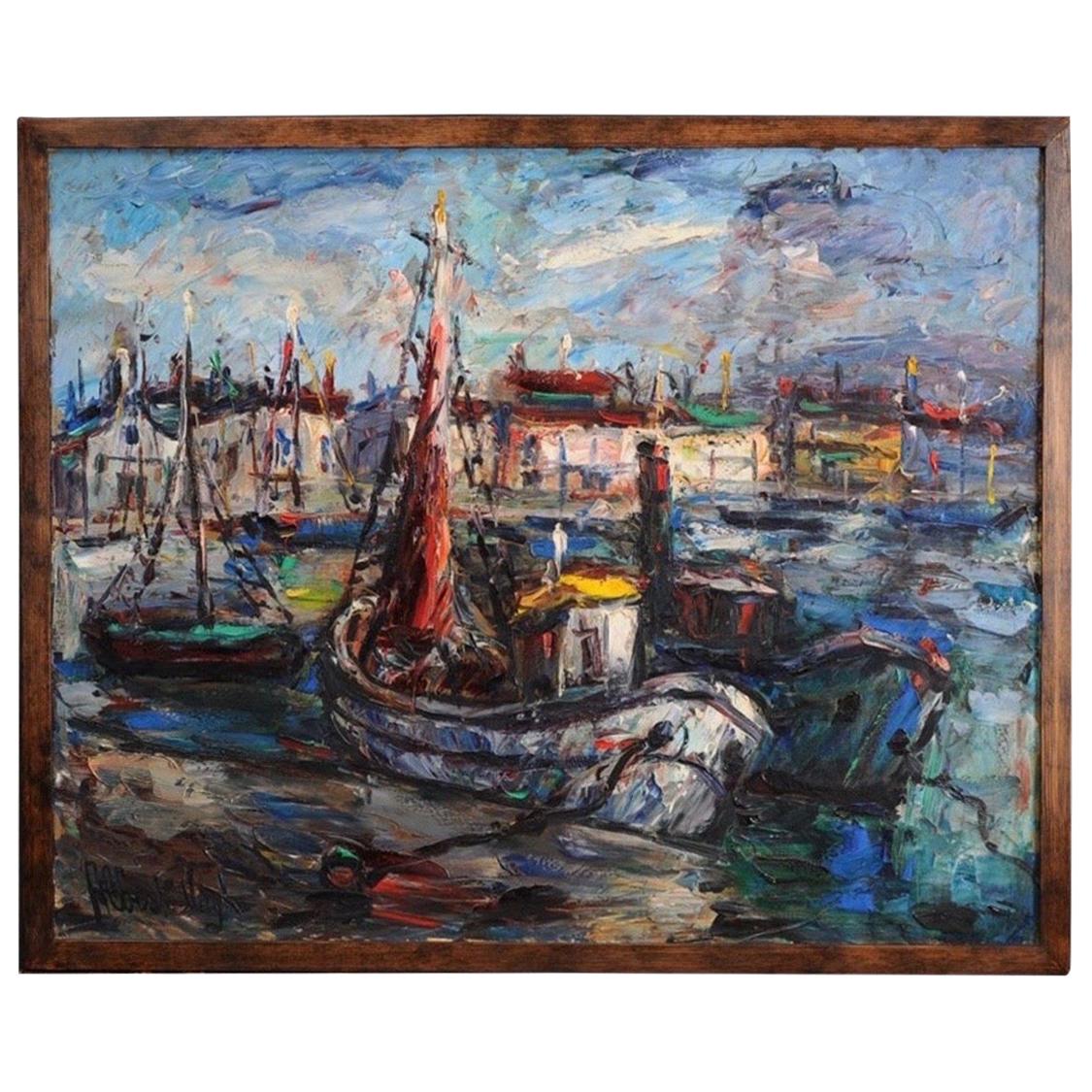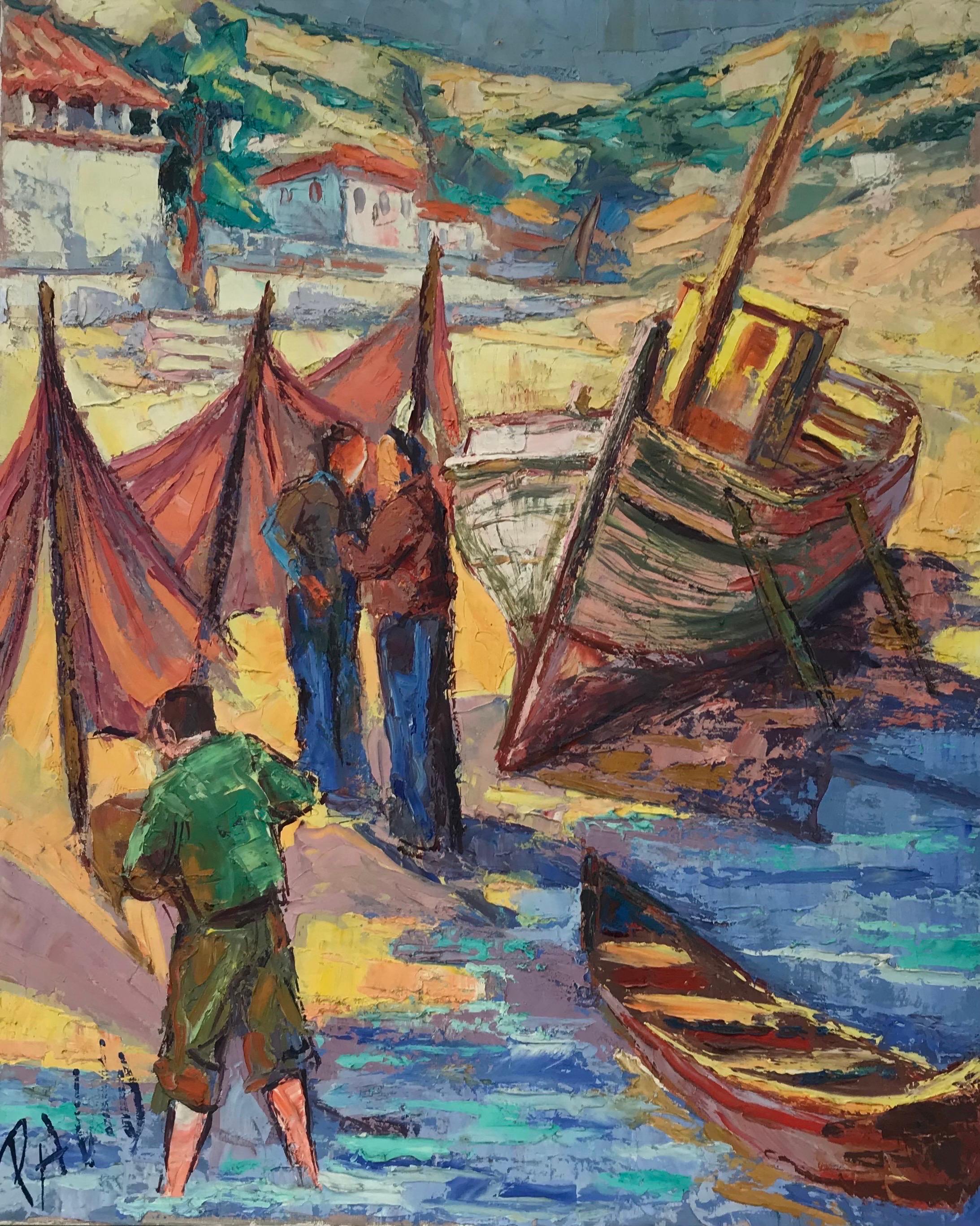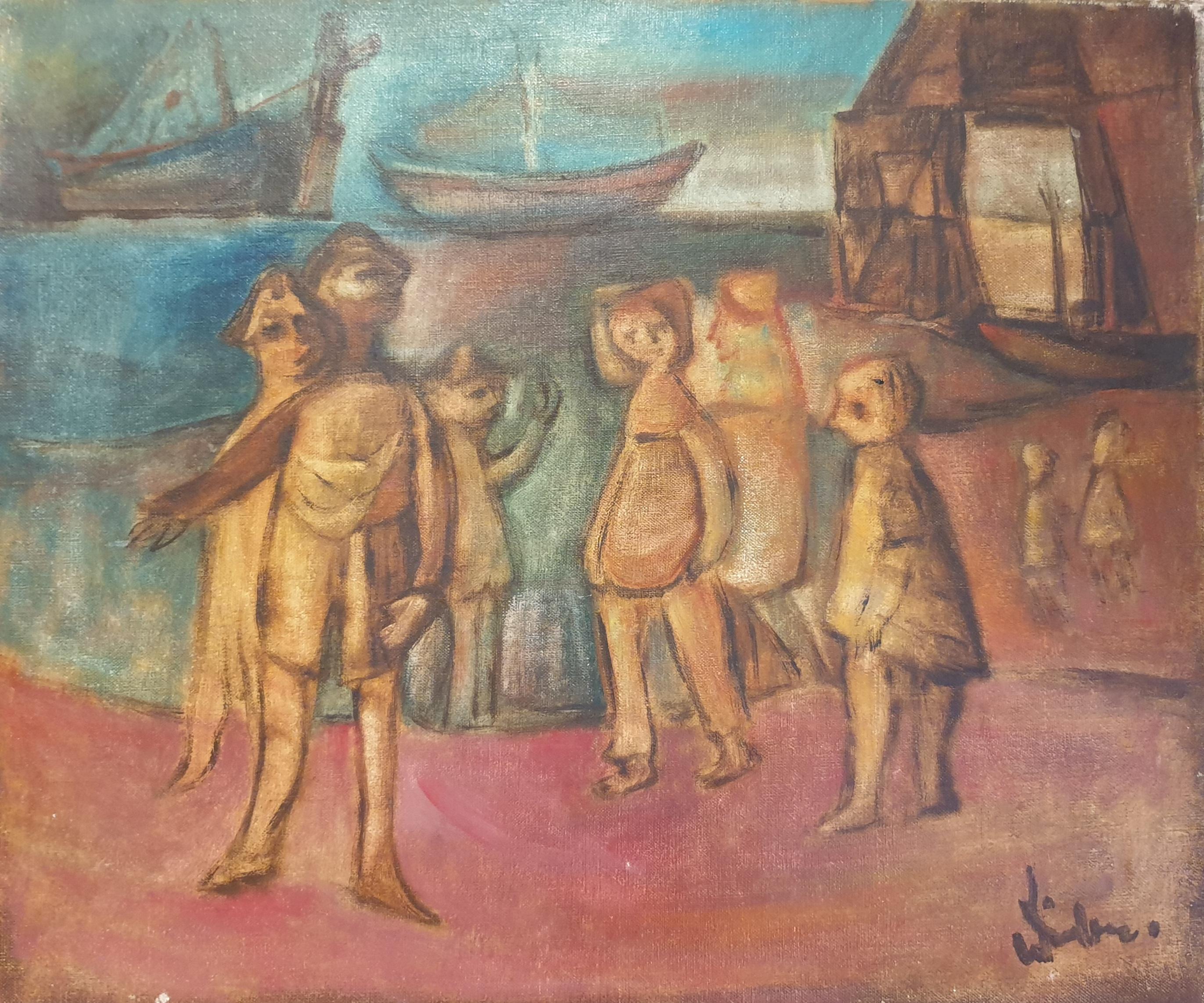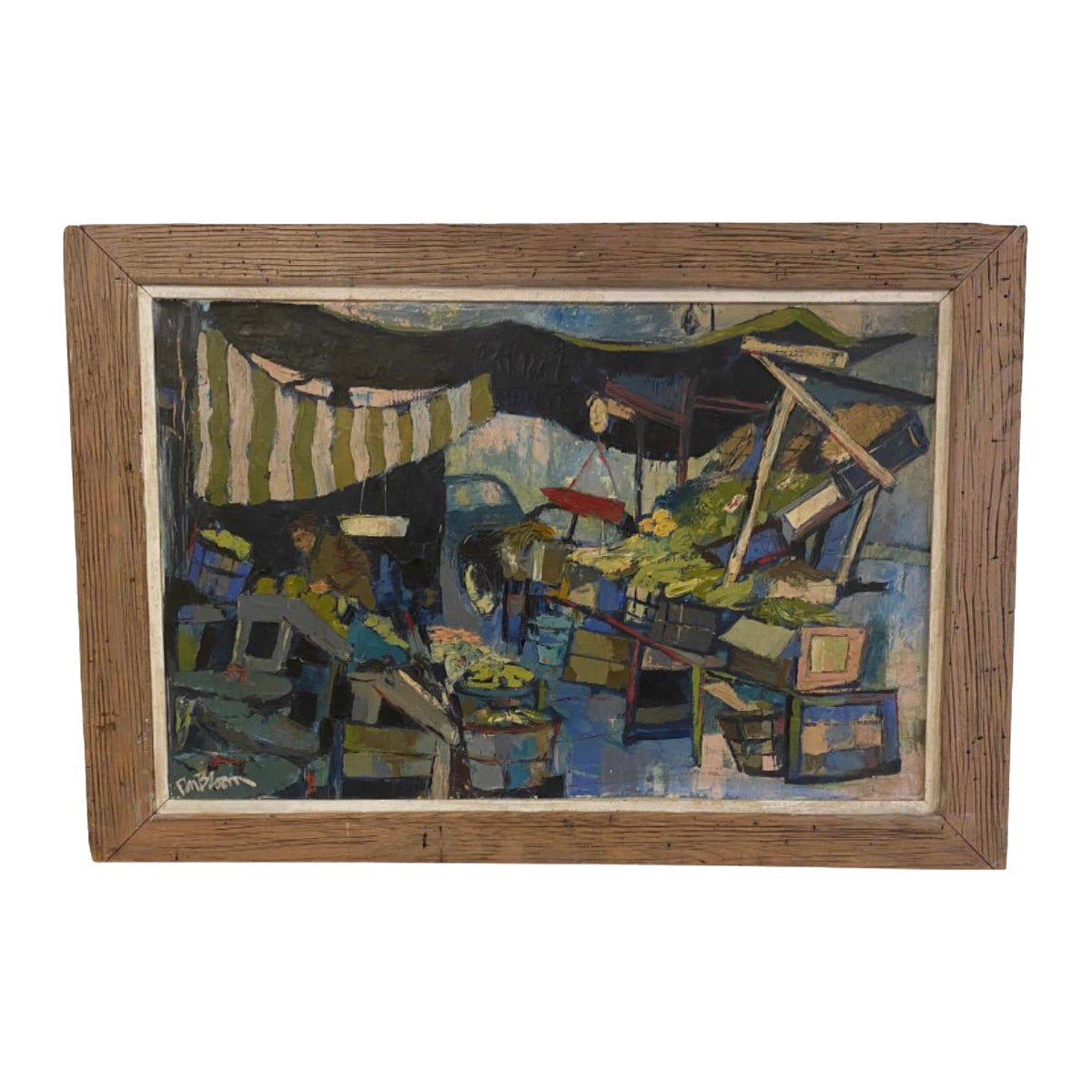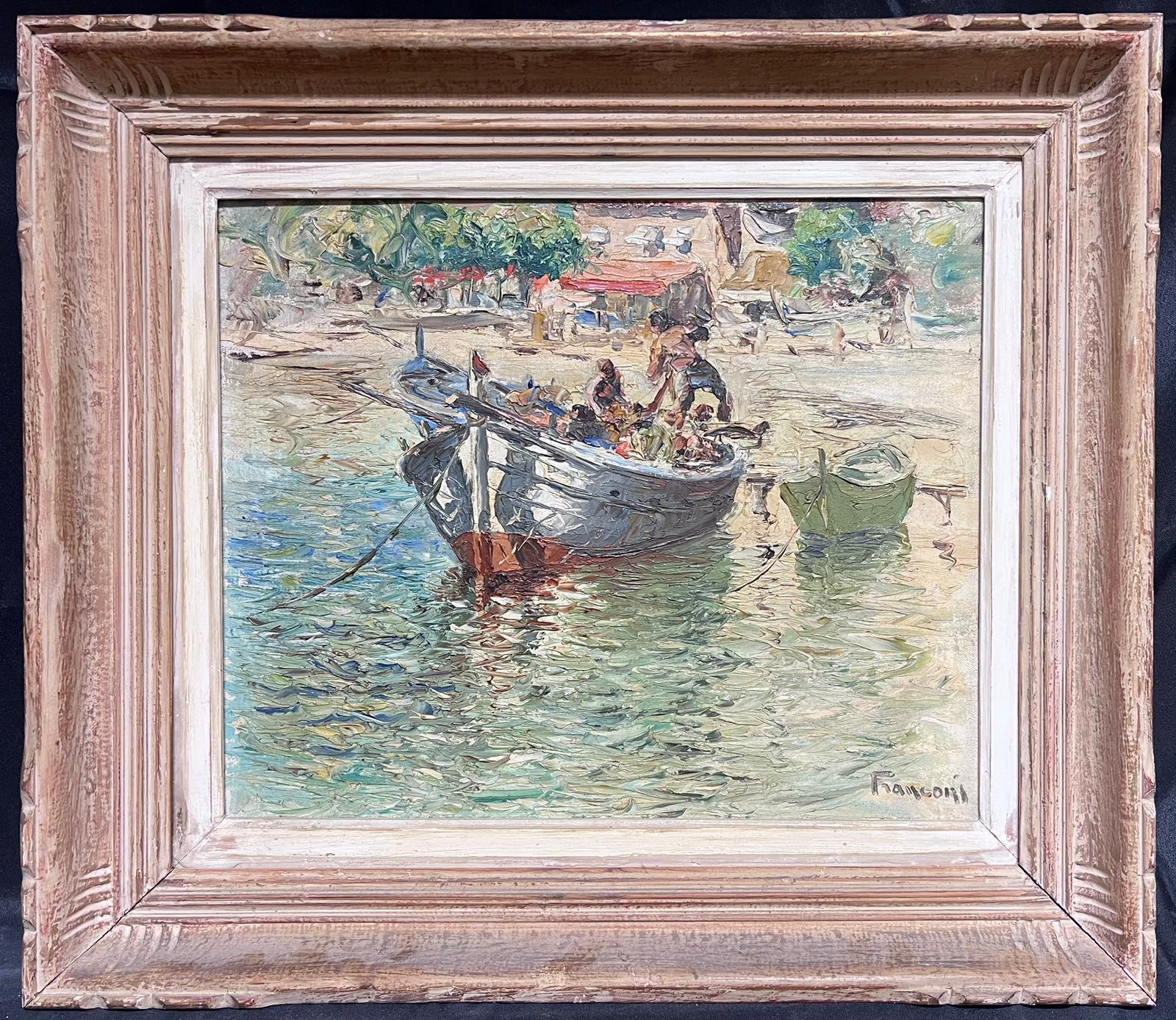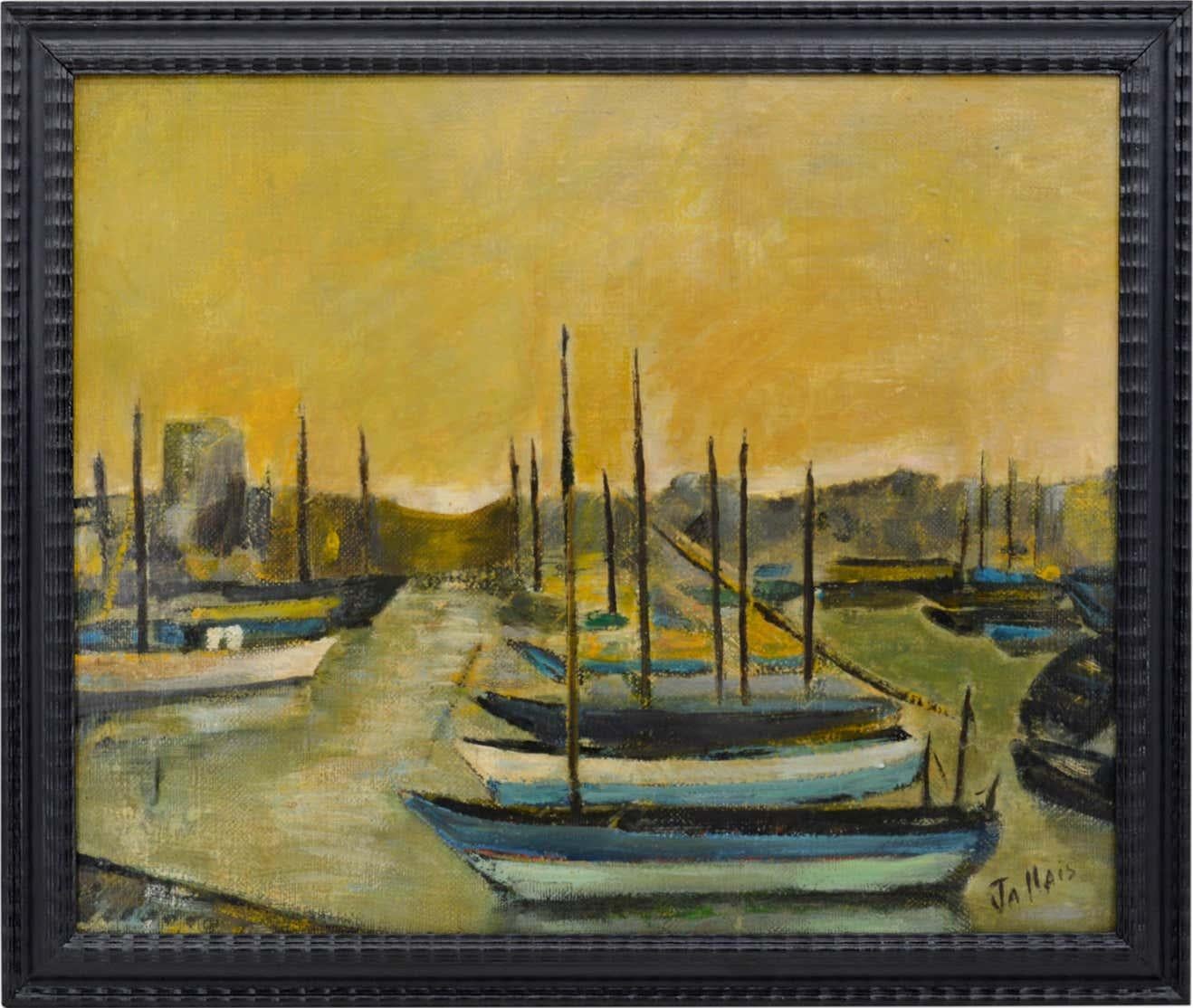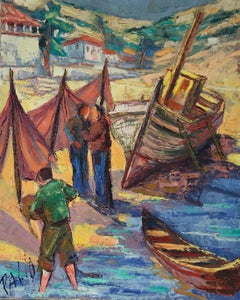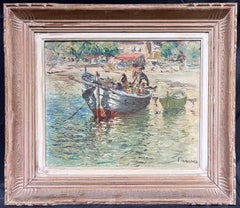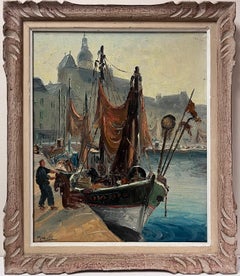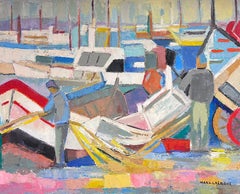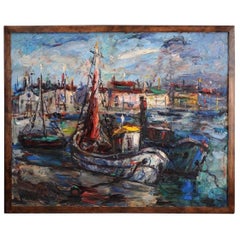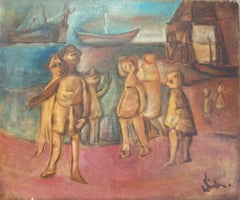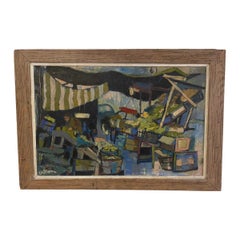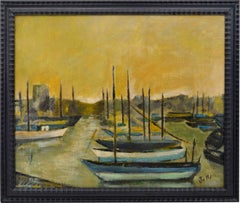Items Similar to 1960's Modernist Signed Oil Very Large Canvas Fisherfolk in Harbour with Boats
Want more images or videos?
Request additional images or videos from the seller
1 of 9
Wong MOO CHEW - PENGHIDUPAN1960's Modernist Signed Oil Very Large Canvas Fisherfolk in Harbour with Boats1960's
1960's
$1,985.20
$2,481.5020% Off
£1,440
£1,80020% Off
€1,681.55
€2,101.9420% Off
CA$2,744.89
CA$3,431.1220% Off
A$3,013.55
A$3,766.9420% Off
CHF 1,572.18
CHF 1,965.2220% Off
MX$36,468.15
MX$45,585.1820% Off
NOK 19,704.78
NOK 24,630.9720% Off
SEK 18,567.08
SEK 23,208.8520% Off
DKK 12,552.35
DKK 15,690.4420% Off
About the Item
Artist/ School: Wong MOO CHEW - PENGHIDUPAN (Malaysian b. 1942), signed, dated 1967
Title: Fishing Harbour
Medium: oil painting on canvas, framed, signed.
Size: framed: 24.5 x 34 inches
painting: 23.75 x 33 inches
Provenance: from a private collection in France.
Condition: The painting is in good and pleasing condition.
- Creator:Wong MOO CHEW - PENGHIDUPAN (1937, Malaysian)
- Creation Year:1960's
- Dimensions:Height: 24.5 in (62.23 cm)Width: 34 in (86.36 cm)Depth: 1 in (2.54 cm)
- Medium:
- Movement & Style:
- Period:
- Condition:
- Gallery Location:Cirencester, GB
- Reference Number:1stDibs: LU50939351142
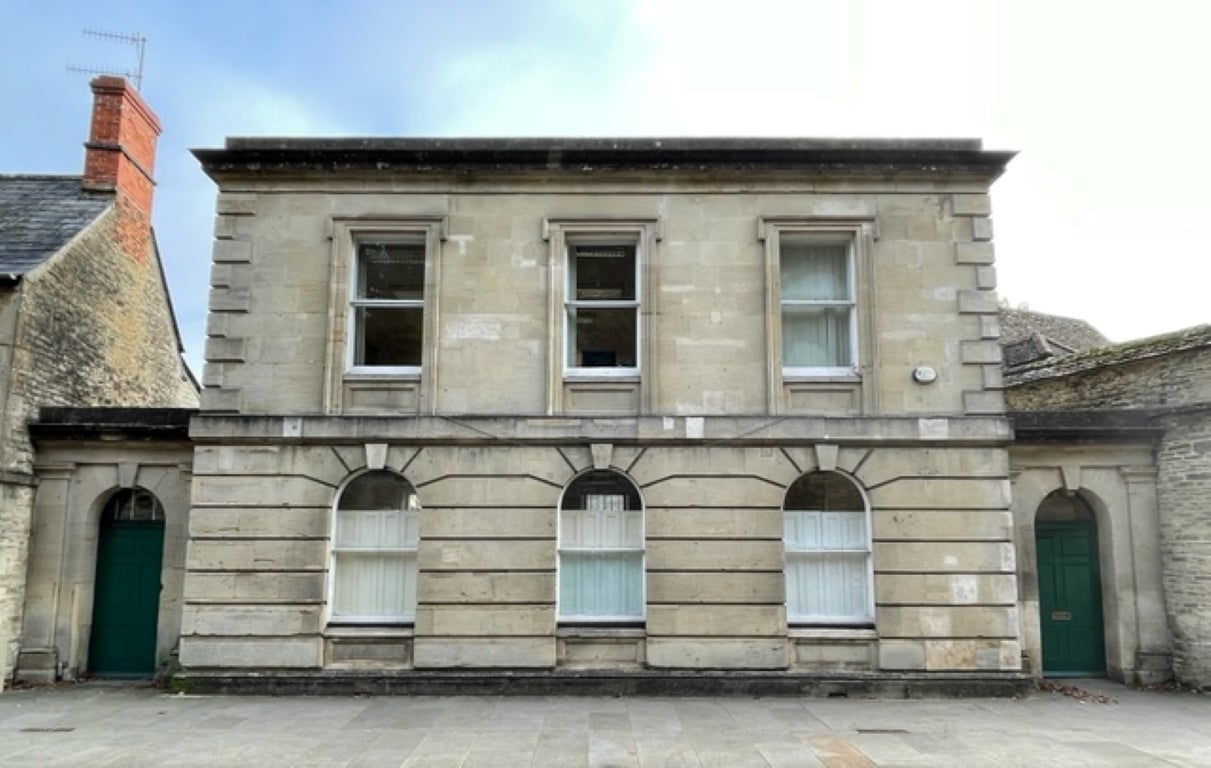
About the Seller
5.0
Platinum Seller
Premium sellers with a 4.7+ rating and 24-hour response times
Established in 1989
1stDibs seller since 2016
4,822 sales on 1stDibs
Typical response time: 1 hour
- ShippingRetrieving quote...Shipping from: Cirencester, United Kingdom
- Return Policy
Authenticity Guarantee
In the unlikely event there’s an issue with an item’s authenticity, contact us within 1 year for a full refund. DetailsMoney-Back Guarantee
If your item is not as described, is damaged in transit, or does not arrive, contact us within 7 days for a full refund. Details24-Hour Cancellation
You have a 24-hour grace period in which to reconsider your purchase, with no questions asked.Vetted Professional Sellers
Our world-class sellers must adhere to strict standards for service and quality, maintaining the integrity of our listings.Price-Match Guarantee
If you find that a seller listed the same item for a lower price elsewhere, we’ll match it.Trusted Global Delivery
Our best-in-class carrier network provides specialized shipping options worldwide, including custom delivery.More From This Seller
View All1950's French Post-Impressionist Signed Oil - Fishermen with Boats on Beach
Located in Cirencester, Gloucestershire
Artist/ School: French School, mid 20th century, signed lower corner
Title: Drying the Nets. Wonderfully thick textured oil painting and diverse palette range of color.
Medium: o...
Category
Mid-20th Century Post-Impressionist Landscape Paintings
Materials
Oil
$1,544 Sale Price
20% Off
Signed Italian Oil Painting c. 1950's Fishing Boat Sunny Beach Side Sea Scene
Located in Cirencester, Gloucestershire
On the Beach
Italian Impressionist, circa 1950's
signed "Falconi"
oil on canvas, framed
framed: 21 x 24 inches
canvas: 15 x 18.5 inches
provenance: private collection, France
conditi...
Category
Mid-20th Century Impressionist Landscape Paintings
Materials
Oil, Canvas
1950's French Mid Century Signed Oil Fishermen South of France Habour with Boats
Located in Cirencester, Gloucestershire
The Fishing Harbor
French School, mid 20th century
signed oil on canvas, framed in original frame
framed: 22 x 18.5 inches
canvas: 18 x 15 inches
provenance: private collection, Fran...
Category
Mid-20th Century Post-Impressionist Landscape Paintings
Materials
Oil, Canvas
$1,422 Sale Price
20% Off
Huge Mid 20th Century French Cubist Signed Oil Fisherman with Boats Harbor Quay
Located in Cirencester, Gloucestershire
Composition Cubiste aux Pecheurs
by Marguerite Lacroux (French/ Swiss 1898-1972)
signed oil on canvas, framed in original wooden studio frame
framed: 32.5 x 40
painting: 31.75 x 39 ...
Category
Mid-20th Century Impressionist Figurative Paintings
Materials
Oil, Canvas
1960's French Modernist Signed Oil Painting Colorful Boats in Harbour
Located in Cirencester, Gloucestershire
French Modernist artist, 1960's
signed & dated
oil on canvas laid on board, unframed
board: 18 x 22 inches
provenance: private collection, France
condition: good and sound condition
Category
Mid-20th Century Modern Landscape Paintings
Materials
Oil
$987 Sale Price
20% Off
1950s French Impressionist Oil Painting Beach Scene Vintage Sailing Boats Harbor
Located in Cirencester, Gloucestershire
The Old Harbor
French Impressionist artist, mid 20th century
oil on canvas laid over board, framed
painting: 9 x 9 inches
framed: 9.5 x 9.5 inches
condition: overall very good, a few...
Category
Mid-20th Century Impressionist Landscape Paintings
Materials
Oil
You May Also Like
Signed Midcentury Painting of Fishing Boats at Dock
Located in Richmond, VA
Oil on canvas signed and dated 1962.
Category
Mid-20th Century Unknown Paintings
Materials
Paint
Mid-Century Oil on Canvas. Harbour scene. 'Farewell to the Fishermen'..
Located in Cotignac, FR
Mid 20th century oil on canvas of a crowded harbour scene, showing the local fisherman or sailors saying farewell to their families before going to sea. The painting is signed bottom right but the artist remains as yet unidentified.
A colourful yet slightly brooding and dreamlike painting. The figures are faceless and the shapes loose and undefined reminiscent of the works by Balthus who in turn was influenced by LS Lowry and his scenes of industrial districts. The colours are deep and glowing and the shapes of the figures are rounded giving a sense of warmth and evoking the quality of light seen at either dawn or dusk.
Balthasar Klossowski de Rola (February 29, 1908 – February 18, 2001), known as Balthus, was a Polish-French modern artist. He is known for his erotically charged images of pubescent girls, but also for the refined, dreamlike quality of his imagery.
Lowry is famous for painting scenes of life in the industrial districts of North West England in the mid-20th century. He developed a distinctive style of painting and is best known for his urban landscapes peopled with human figures often referred to as "matchstick men".
Category
Mid-20th Century Figurative Paintings
Materials
Canvas, Oil
1957 Don Bloom Market Scene modernist original oil on canvas
Located in Farmingdale, NJ
Don Bloom (b. 1932-2016) large oil painting, dated 1957. In 1960 he was awarded the Guggenheim fellowship for creative painting, the same year his work was i...
Category
Vintage 1950s American Mid-Century Modern Paintings
Materials
Canvas
Oil on Canvas by Jallais, Boats in Port, 1960s
Located in Saint Amans des cots, FR
Oil on canvas by Jallais, France, 1960s. Boats in port. In its pretty dark brown wooden frame. With frame: 68x58 cm - 26.8x22.8 inches, without frame: 61x50 cm - 24x19.7 inches. 12F ...
Category
1960s Post-Impressionist Figurative Paintings
Materials
Canvas, Oil
Sarah Leonard Krepp Large Mid-Century Modern Boats Painting
By Sarah Leonard Krepp
Located in Chicago, IL
Sarah Leonard Krepp painting. Signed.
Attached Resume...
EDUCATION AND ACADEMIC EXPERIENCE
Professor Emeritus and former Chair – Painting Program, School of Art and Design, University of Illinois at Urbana-Champaign
Director, DIALOGUE CHICAGO, 2003-present
Visiting Professor, Artist, School of the Art Institute of Chicago, Chicago, IL
MFA – The School of the Art Institute of Chicago, Chicago, IL
BS -- Skidmore College, Saratoga Springs, NY
SELECTED SOLO AND TWO PERSON EXHIBITIONS
“Sarah Krepp and Olivia Petrides: Line/Force/Burn Rubber!”, Leedy-Voulkos Art Center, Kansas City, MO, (catalog essay by Jason Foumberg, curator Thoma Foundation, Chicago), 2021
“Sarah Krepp and Olivia Petrides: Line/Force/Burn Rubber!”, Western Illinois University Gallery, Macomb, IL, 2021
“Tatting ↔︎ Tearing”, GSU Visual Arts Gallery, Governors State University, University Park, IL, 2020
“Sarah Krepp and Olivia Petrides: Line/Force/Burn Rubber!”, Brauer Art Museum, Valparaiso, IN, 2019
“Sarah Krepp and Olivia Petrides: Line/Force/Burn Rubber!”, Phipps Center for the Arts, Hudson, WI, 2018
"Deconstructing the American Landscape" (with Joel Ross), Rockford Art Museum, Rockford, IL, (catalogue essay by Lisa Wainwright, School of the Art Institute of Chicago, Dean of Faculty), 2016 - 2017
"BLOW-OUT II" (with Garry Noland), University of Northern Iowa Museum, Cedar Falls, IA, (catalogue essay by Lynne Warren, MCA Curator), 2015
“BLOW-OUT”, Chicago Cultural Center, Chicago, IL, 2012-2013
“The Walking Drawings”, Roy Boyd Gallery, Chicago, IL, 2012
“Sarah Krepp”, Gallery 175, Chicago, IL, 2011
“Sarah Krepp”, Roy Boyd Gallery, Chicago IL, 2012, 2009, 2005, 2002, 1998, 1994, 1990, 1988, 1985, 1982, 1980
“Sarah Krepp,” Indiana University Northwest, Gary, IN, 2009
Gallery K, Washington, DC, 2003
Betty Moody Gallery, Houston, TX, 1999
Hellenic American Institute, Athens, Greece, 1999
Locus Gallery, St. Louis, MO, 1997
I Space Gallery, Chicago, IL, 1996
Krannert Art Museum, Champaign, IL. 1994
Marvin Seline Gallery, Houston, TX, 1991
Lucy Berman Gallery, Palo Alto, CA, 1989
NAB Gallery, Chicago, IL, 1988
B. Z. Wagman Gallery, St. Louis, MO, 1986
ARC Gallery, Chicago, IL, 1985
Roy Boyd Gallery, Santa Monica, CA, 1983
SELECTED GROUP EXHIBITIONS
“A Sense of Gravity”, Sarah Krepp, Cleveland Dean, Jesse Howard, Hofheimer Gallery, Chicago, IL 2019
“Dubque Art Museum Biennial", Dubuque Art Museum, Dubuque, IA 2017 (first prize)
"Translation - Collage and Assemblage", Illinois State Museum, Chicago, IL (traveling - 3 yrs) 2015
"WHERE THE POWER GOES", visual collaboration with the Seldoms Dance Company, Museum of Contemporary Art, Chicago, IL, 2014-15
“Sarah Krepp and Firat Erdim”, Olympia Center, Chicago, IL 2013
“Wall Relief”, Roy Boyd Gallery, Chicago, IL, 2013
“Some DIALOGUE”, Illinois State Museum, Chicago, IL, 2013
“Ways of Making: Painting,” Visual Arts Gallery, Governors State University, University Park IL, 2012
“Art Chicago”, International Art Exposition, Chicago, IL (annually 1983-2011)
“ Gallery Artists”, Roy Boyd Gallery, Chicago, IL (annually since 1979)
“Viewing Program,” Drawing Center, New York City, NY, 2009
“Prints & Drawings: Works on Paper,” Lubeznik Center for the Arts, Michigan City, IN, 2009
“Dialogue 4: Mentoring Vision,” Metcap Bank, Chicago, IL, 2008-09
“Art Works Chicago: A Progressive Corporate Exhibition of Chicago Artists,” Metcap Bank, Chicago, IL 2007
“Icy/I See” (2-person show), Los Manos...
Category
20th Century American Mid-Century Modern Paintings
Materials
Canvas
1950s Ruth M. Fulton WPA Abstract Impressionist Painting of Sailors on a Boat
Located in Miami, FL
1950s Ruth Fulton WPA Abstract Impressionist Painting of Sailors on a Boat
Offered for sale is a 1950s Ruth McConnell Fulton (1905-2003) WPA School Impressionist painting depictin...
Category
Mid-20th Century American Mid-Century Modern Paintings
Materials
Canvas, Wood, Paint
More Ways To Browse
1960s Modern Art
1960s Painting Canvas
Dali Watercolor
Joan Miro Derriere Le Miroir
Mid Century Japanese Woodblock Print
Mourlot 1959
Sepia Photographs
1809 Art
Palm Springs Homes
Antique Postcards
Bronze Sculpture Of A Couple
Kate Moss Black And White
Alice In Wonderland
Hunting Prints
Olympic Art
Portrait Of Family
Retro Futurism
Black And White African Woman
